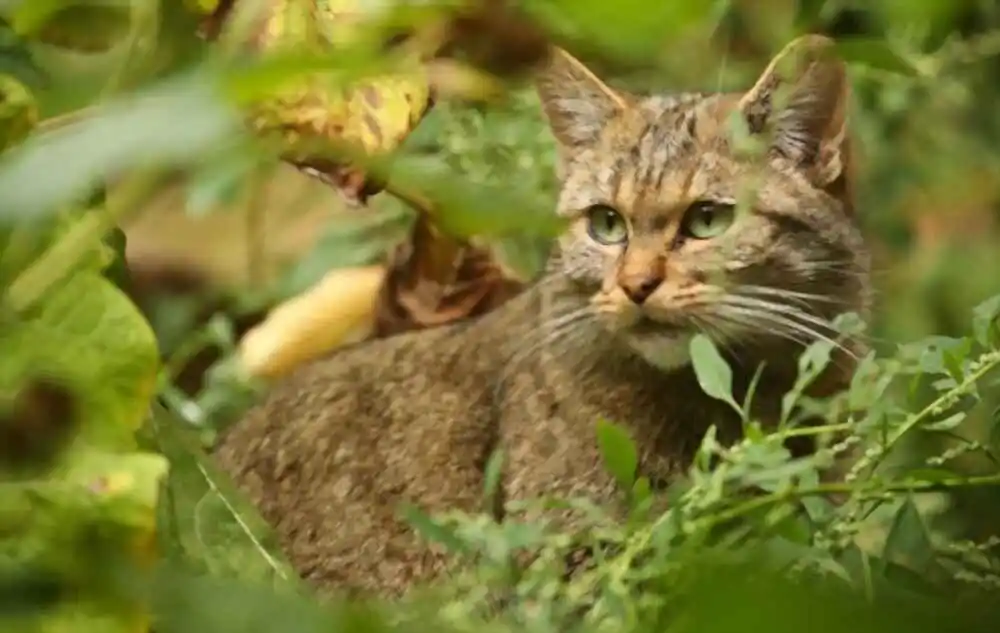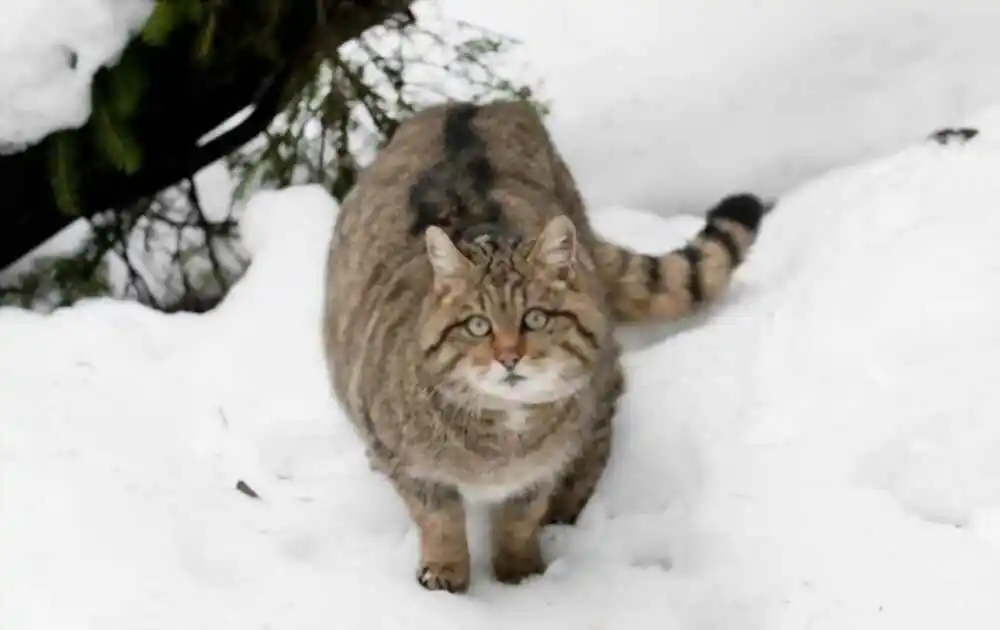The European wildcat is a small, wild cat that is local to continental Europe. It additionally lives in the Caucasus and Turkey. The animal is discovered in forests from the Iberian Peninsula to the Caucasus.
Its habitat consists of forests and meadows inside the mountains and valleys of those regions. Its variety may be very huge and include all components of Europe. Examine more about European and Caucasian wildcats to research more about this first-rate animal.
The table provides a concise summary of key characteristics of the European Wildcat, including its scientific name, natural habitat, diet, lifespan, physical dimensions, conservation status, and distinctive features.
| Attribute | Description |
|---|---|
| Scientific Name | Felis silvestris |
| Habitat | Forests, grasslands, and rural areas |
| Diet | Small mammals, birds, and insects |
| Average Lifespan | 12-15 years |
| Size | 45-65 cm in length, weighs up to 7.5 kg (17 lb). |
| Conservation Status | Least Concern (IUCN) |
| Unique Traits | Striped fur, bushy tail, and shy behavior |
Physical Characteristics
Subspecies
The European wildcat has two subspecies, the commonplace and the Tartessian. The commonplace European wildcat lives north of the Ebro and the Douro rivers in Portugal and Spain.
From time to time called the “Tartessian” wildcat, the largest males can degree 65 cm lengthy and weigh extra than seven kilograms. Even as the common European wildcat feeds more often than not on small rodents, it is also able to eating rabbits and other prey.
Appearance
The European wildcat has an extended, rounded tail that is proportional to its frame and is surrounded by black jewelry. This makes it appear like it’s been soaked in ink. Its claws are curved and hidden when no longer in use.
Its eyes are slim and feature an internal membrane that resembles a mouse’s. In addition to its short, large ears, the European wildcat has a skinny head and a distinguished face.
Behavior and Territory
The European wildcat is a rather territorial cat. It marks its territory with its feces and urine. It makes use of the identical strategies to mark its territory. It’s going to leave urine and feces to mark its territory.
Its dens are located in rocky crevices and vintage tree roots. Its eyes have an internal membrane which enables it to communicate with its environment. If a wildcat sees a predator, it is in all likelihood to assault.
Wildcat Habitat
The European wildcat is a cat that lives in forested areas. Its variety stretches from Scotland to western Asia. This animal is much like the home cat, however it has longer legs and a longer, thicker tail.
It has a brief, narrow tail and a totally massive head. This cat is just like the home cat but has a thicker coat. Its habitat is specially forested.
Wildcat Conservation
The European wildcat is an endangered species in Europe. Fortunately, there are nonetheless a few relict populations in Scotland. The population of wildcats in those areas has improved dramatically in latest years. Maximum wildcats in Europe are hybrids.
Their habitats are not isolated, and they are frequently fragmented. There are some’relict’ populations within the western highlands of Scotland. Some cats are determined in populated areas, but there are many threats to the European cat.
Legal protection
The European wildcat is a non-domesticated species that lives in forests in Europe. It is also a member of the Bern conference. Its domestic tiers are largely covered. Some international locations have adopted regulation to protect this species.
Contrary to common opinion, European wildcats do not only live in forested areas, especially in the north where they have less safety. These cats are able to travel outside of forest regions despite having restricted habitat options. Strangely, their territories frequently intersect with other migratory fowl routes, making them a great activity among those who enjoy the natural world.
.
Geographic Distribution of European Wildcat
The European wildcat can live on in cultivated areas, and it is broadly dispensed in the course of Europe. Although it isn’t always massive inside the America, the wildcats in the Iberian place are the largest in the global.
Inside the south, they may be located in a ramification of habitats, such as cultivated landscapes and open grasslands. While it is not taken into consideration an endangered species, the home stages of the 2 species are very similar.
Also known as the European bobcat, the species is predominantly native to eastern and central Europe. Its tiers increase from Siberia and Asia to southern Asia. It is observed in countries across eastern and critical Europe.
Its peak is eighty to a hundred thirty cm, and its weight is between 60 and 75 grams. It has a wide variety of habitats and is not constrained to a single country. Its levels in distinct parts of Europe.
Diet
The European wildcat is a strictly covered species. Its range is widespread. The primary diet of the European wildcat consists of mice, voles, and rabbits. In some regions, it also feeds on insectivores like frogs and birds. However, in some regions, it’s the main prey item.
It is also able to consume insectivores consisting of frogs and birds. It has a completely narrow tail. Like its domestic cousins, it can be noticed in cities. It’s miles difficult to seize the European wildcat inside the wild.
Conclusion
The European wildcat is a versatile and adaptable species native to diverse regions throughout Europe and components of Asia. Even as it faces demanding situations, which include habitat loss and a lack of uniform legal protection, it remains a resilient and captivating member of the wild tom cat circle of relatives.
Its potential to thrive in various habitats, from forests to cultivated landscapes, underscores its ecological importance and appeal for flora and fauna lovers.
Based on your interests, I’ve listed some cat species below that you might find intriguing.


